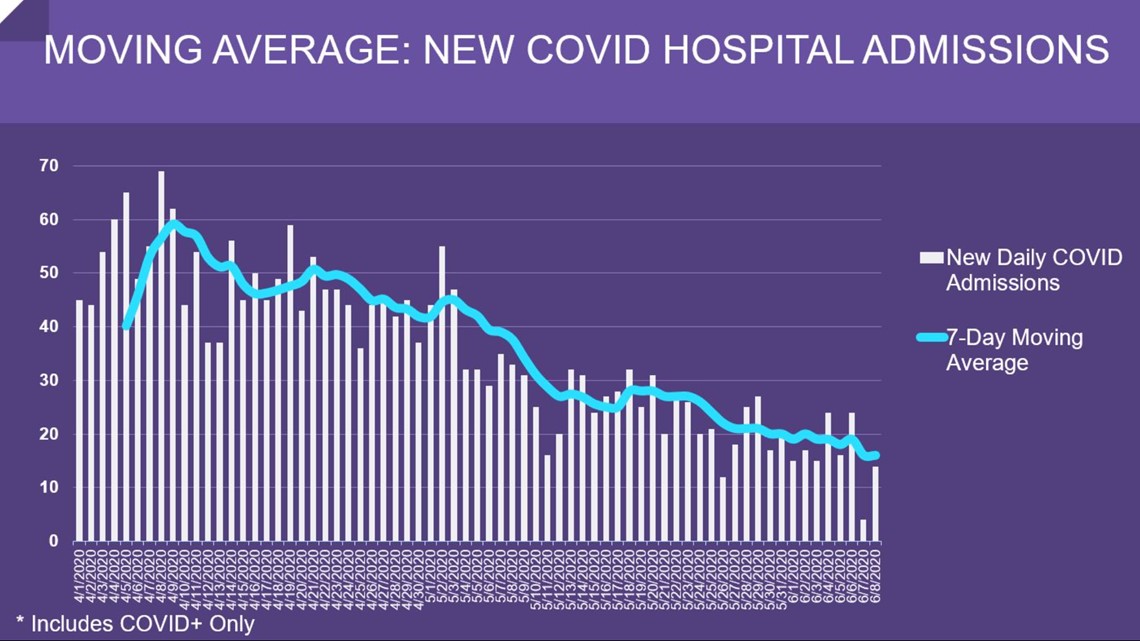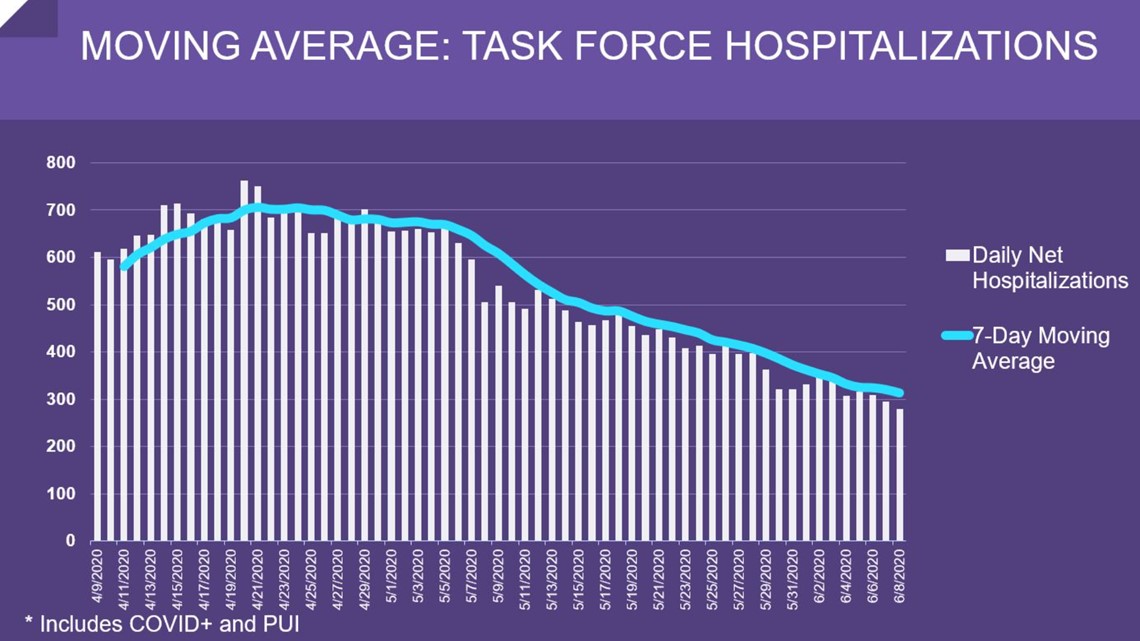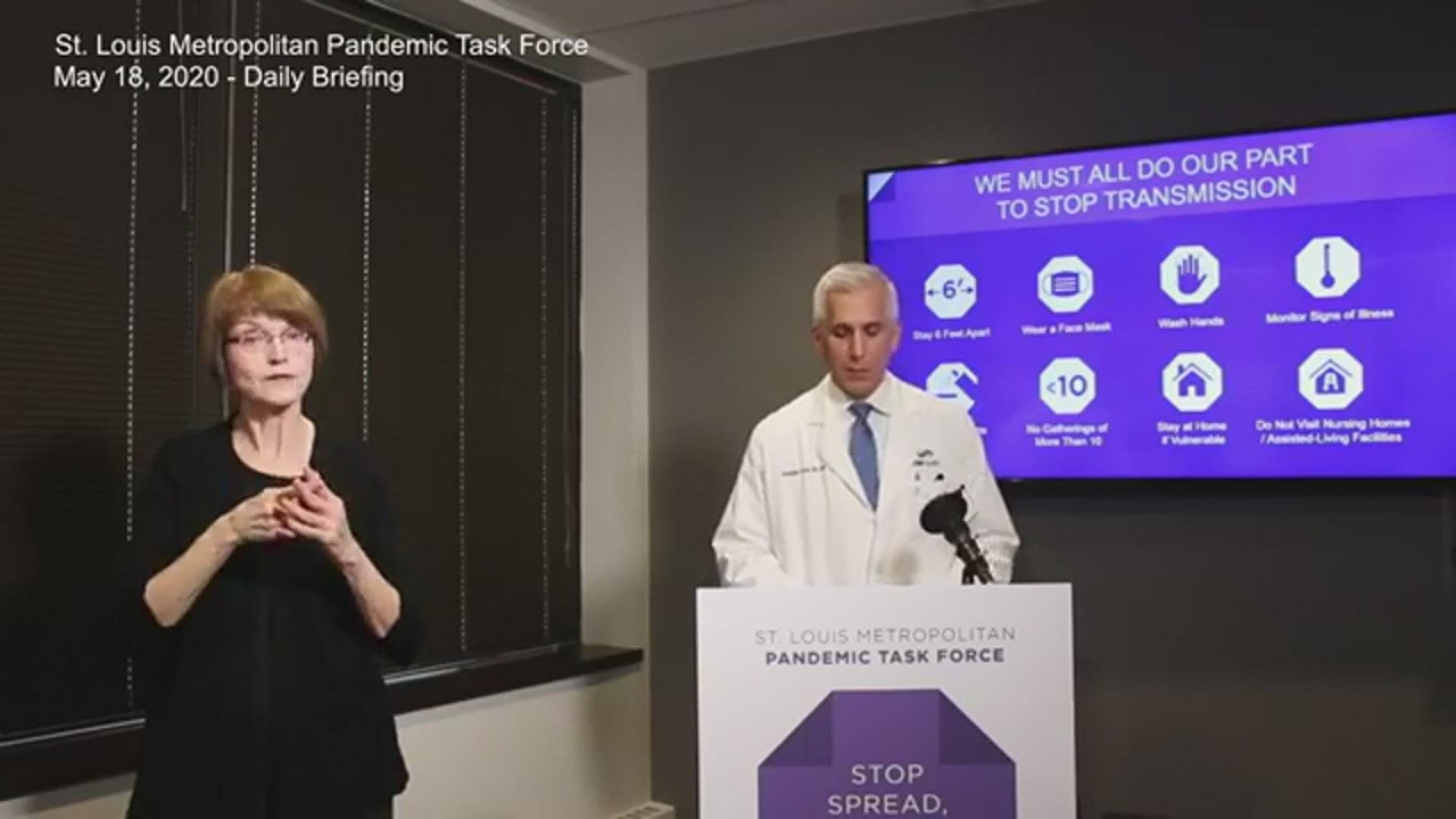ST. LOUIS — After reaching the lowest point since data collection began, the number of new coronavirus patients admitted to St. Louis hospitals bounced back up into the teens Monday.
The St. Louis Metropolitan Pandemic Task Force released its updated numbers Monday afternoon.
One of the key data trends task force hospitals – and local leaders – are following is the number of new COVID-19 patients admitted to area hospitals. On Sunday, the task force reported four new patients, which is the lowest number since the task force stated tracking this number on April 1.
But on Monday, the number went back into the teens, hitting 14 new COVID-19 patients.
The graph below shows the both the daily (white bars) and seven-day average (blue line) of new coronavirus patients who checked in to task force hospitals.


The two data points that track the overall number of COVID-19 patients in task force hospitals continued their downward trends Monday.
The graph below shows both the daily (white bars) and seven-day average (blue line) of total COVID-19 patients who are being treated at task force hospitals.


The full breakdown of data trends from the task force is below.
- New hospital admissions: 14, up from 4
- Seven-day moving average of new hospital admissions: stayed the same at 16
- Hospitalizations: 279, down from 295
- Seven-day moving average of hospitalizations: 314, down from 321
- Patients in the ICU: 71, down from 75
- Patients on ventilators: 37, down from 44
Over the last 24 hours, 11 COVID-19 patients were released from task force hospitals, bringing the total to 2,456 COVID-19 patients sent home to recover since the first case was reported in the area.
Task force incident commander Dr. Alex Garza plans to give his next live stream update on Friday.
8 steps to stay healthy as cities reopen
Signs of what life was like before the coronavirus pandemic are beginning to make their way around St. Louis and St. Louis County.
But doctors say some of the changes we’ve made in our everyday lives need to stick around, possibly until a vaccine is approved.
“The virus hasn’t left. It hasn’t changed. It’s still here. It’s still very contagious and it’s still very dangerous,” Dr. Alex Garza said previously. He’s the incident commander of the St. Louis Metropolitan Pandemic Task Force.
For weeks now, Dr. Garza has stressed the importance of social distancing, frequently washing hands and cleaning surfaces. He said as economies and businesses reopen, it’s especially important to continue those practices that helped slow the spread of COVID-19 in the St. Louis area.
“We also know that we’re never going to be at zero transmission until there’s a vaccine. So, we have to learn how to live with the virus and take all those important steps to keep it in check,” Dr. Garza said.
To help keep the coronavirus in check in the St. Louis area, Dr. Garza offered these eight steps to keep yourself, your loved ones and the entire community safe.
- Stay 6 feet apart from others – the exception being those you live with
- Wear a face mask in public
- Wash your hands frequently with soap and water for at least 20 seconds
- Clean surfaces regularly, including phones, counters, light switches – anything that’s touched frequently
- Monitor yourself for signs of illness, contact your doctor if you’re experiencing COVID-19 symptoms
- Don’t gather with more than 10 people
- Stay at home if you’re vulnerable or at high risk of infection
- Don’t visit nursing homes or assisted-living facilities
“These are the steps we all need to make to keep the transmission rate low and to prevent the new surge in cases,” Dr. Garza said.

